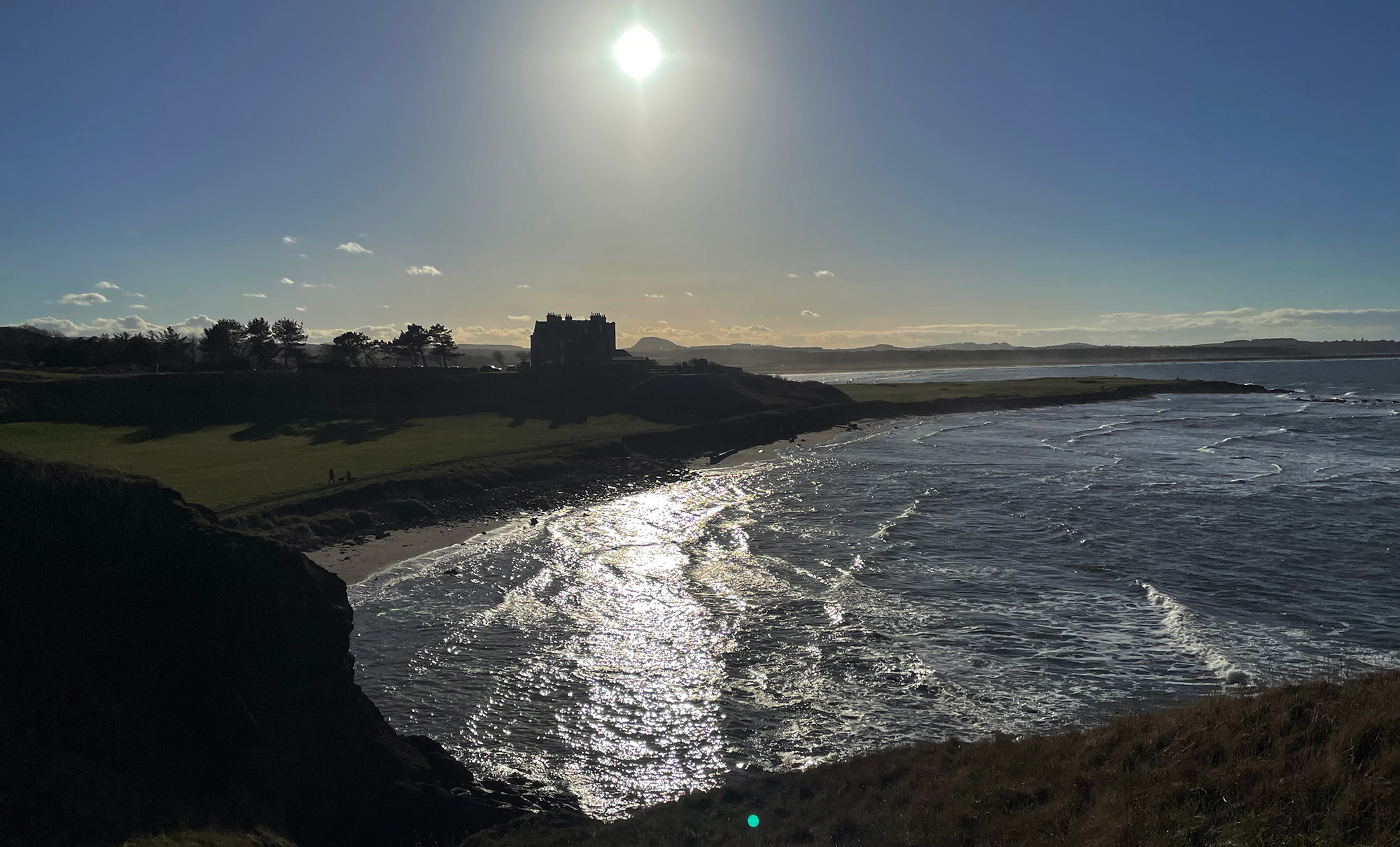Scotland has a special place in my heart. Decades ago, when I went there on my first visit, a large advertising banner greeted me at Glasgow Airport:
“Welcome to the world’s best little country.”
I was immediately smitten with the slogan, and with a place that would advertise itself this way. My experiences around the country have since never betrayed that slogan. Nature in Scotland is stunning, people are welcoming and open, there is a sense of cosiness that’s hard to find elsewhere, nobody takes themselves too seriously — overwhelmingly, the people you meet in Scotland are humble, curious, and funny. It may indeed be the world’s best little country. When it became clear in early 2018 that we would travel to Scotland frequently to shoot significant parts of our film (which eventually became ‘Purpose’), I was very happy.
We finished the film late last year, and once again Scotland was very much on my mind. Not only because the film’s Scottish bits tell the story of a country that dares to think big, on the far side of its humility. But also because the pioneering political work that Scotland has done, and that our film presents on a silver platter for all to admire, is now at risk of getting lost. In part because the maniac on the other side of the pond is drastically altering our political discourse around the economy (and everything else). But also because domestically, the political winds in Scotland have shifted. Key figures have left office, there is talk of austerity again, and the same tired policies are looming that have been running societies into the ground for decades now — yet they somehow continue to be favoured by politicians of all stripes in times of crises.
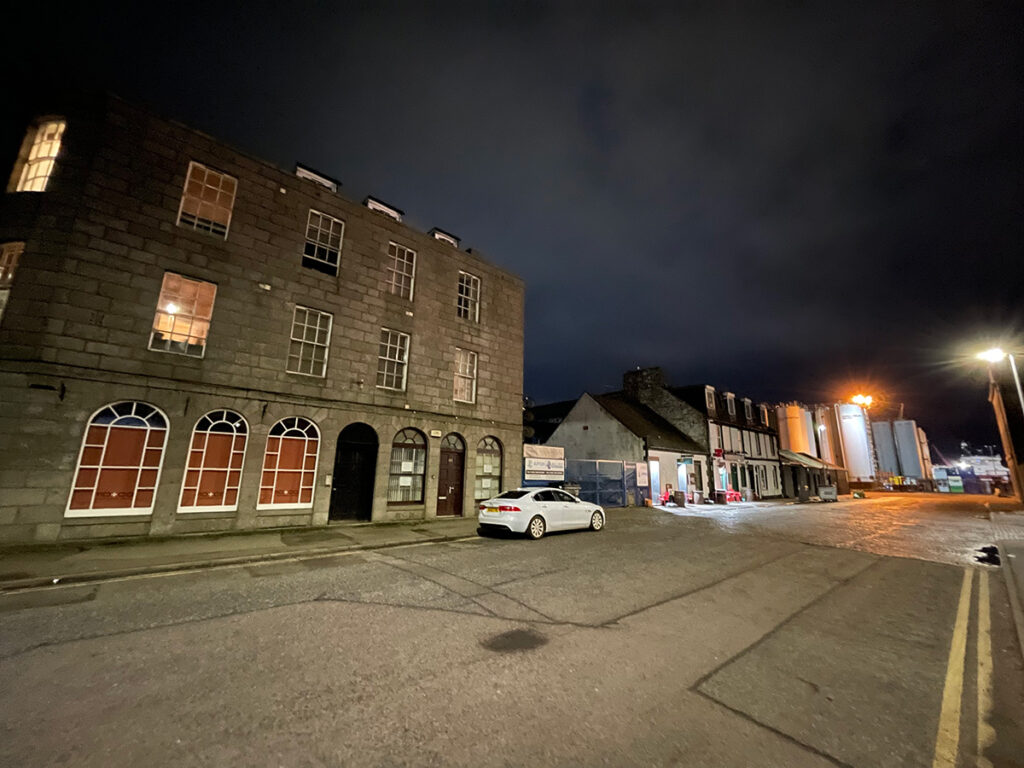
Mind you, small independently produced documentary feature films cannot change politics. They never have, and never will. But the right film at the right time can be an excuse, a ruse, a trojan horse to enable conversations that otherwise wouldn’t happen. And if there is one thing that can change politics, it’s conversations. So my intrepid colleague Juan and I set about bringing the film to Scotland. Our first port of call was the Scottish team of the Wellbeing Economy Alliance. With their help, we reached out to those around the country willing and interested in showing the film.
The Scottish Purpose Tour was born.
This past weekend, we returned home from that tour.
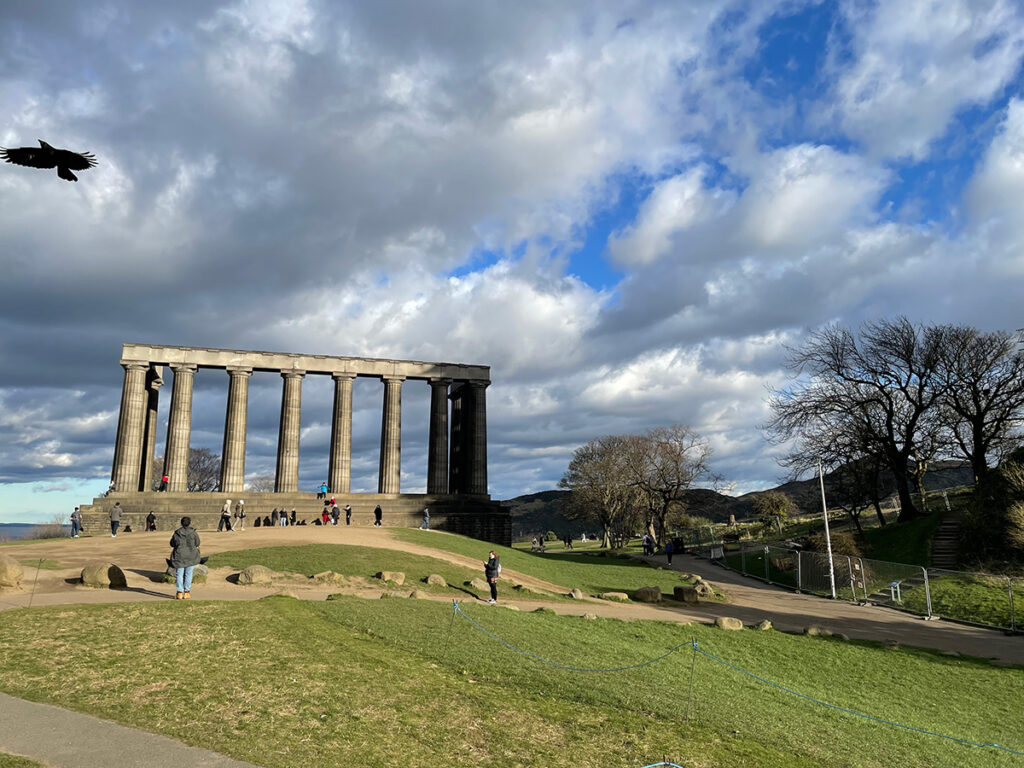
I cannot overstate the warmth and friendliness that greeted us at every screening. Wherever we went, great friends — whom we simply hadn’t met yet — were expecting us. They were getting the room ready, warming up the projector, getting the chairs out, setting up the screen, ready to give the ‘Purpose’ story a home for the day. We showed the film in six locations — where a total of 257 people attended: At the Student Union at the University of the West of Scotland (organised by Mark Langdon), at the University of Edinburgh (Europa Institute), at Fittie Community Hall (organised by Open Road), at Dunbar Parish Church Halls (organised by Sustaining Dunbar), at GMAC Film in Glasgow (co-organised by the SANE Collective), and finally at Glasgow University’s Andrew Stewart Cinema (organised by the Centre for Sustainable Solutions). Our hosts did a great job marketing their events — each bringing dozens of people in, all curious about the path towards a wellbeing economy, and the political struggles Katherine and Lorenzo had gone through.
At the University of Edinburgh, Katherine Trebeck and Gary Gillespie joined us for the after-film panel, elevating the discussion way beyond anything I could have contributed. In Aberdeen, we were lucky to have Alison Stuart (from Nescan) and Lukas Bunse (from WEAll Scotland) on the panel. In Dunbar, Gemma Bone Dodds (former WEAll Scotland board member) not only interviewed me after the film, but added her own insightful comments to the discussion. For scheduling reasons, the last screening at Glasgow University had to happen without us. This time, Gary, Katherine, Lukas and Nicola McEwen made up an incredible panel and had an engaging conversation with the audience.
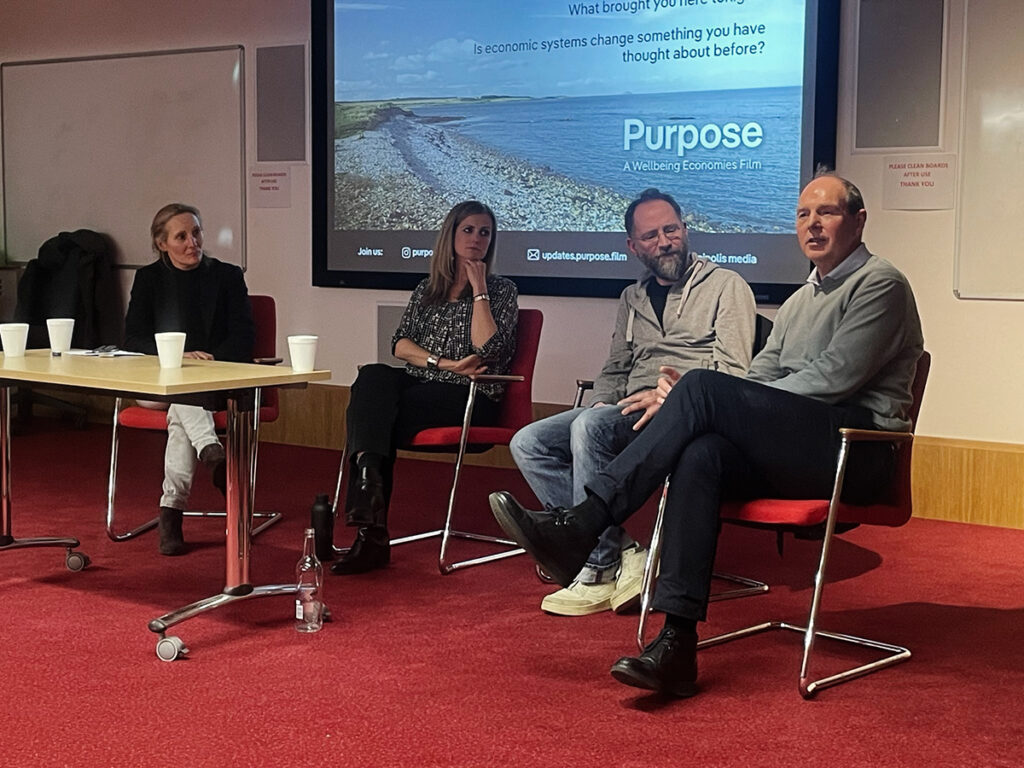
In addition to the screenings, I had the privilege to contribute to two very special events. On Tuesday, March 11th, we were invited to St. Andrew’s House, the seat of the Scottish Government. Gary Gillespie hosted a one-hour virtual session and over 60 members of the Scottish Government team dialled in. We showed three excerpts of the film; after each segment, Gary and I discussed our experience during those years, what the deficiencies of GDP mean for politics, and how the political landscape looks today when it comes to reconfiguring the economy. The feedback we received after the session was incredibly warm and encouraging.
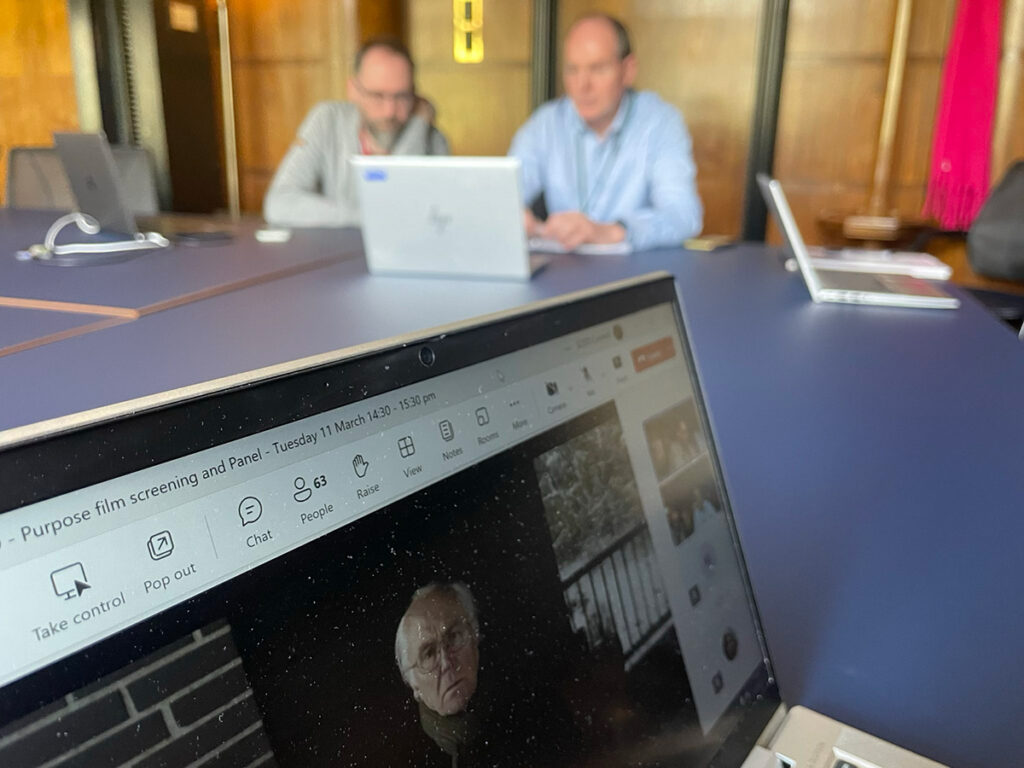
Last but not least, on Friday, March 14th, Katherine invited me to join her ‘Transforming Economies’ lecture series at the University of Edinburgh. I had prepared a talk about my path from growth-obsessed advertising executive to growth-critical filmmaker, and had the chance to discuss my observations and ideas with an impressive group of students.
* * *
When we made the film, our guiding principle was to tell Katherine’s and Lorenzo’s story in a compelling way, and to allow audiences to form their own opinions on what these two were up to. I hope this doesn’t sound pretentious, but we made an attempt to create something that could stand on its own as a piece of art. Our film is not designed as an advertising vehicle to promote a particular set of policies, or as a visual manifesto to make people do something. Paradoxically, we would probably create the opposite effect if we had tried that — the film would alienate folks rather than inspire them. The only thing we could do: Tell the story that we needed to tell, do our best to bring it into the world, then get out of the way and let it create its effects — whatever they may be.
There is a trade-off between ‘telling a story’ and ‘promoting a cause’. You can only very rarely do both effectively at the same time.
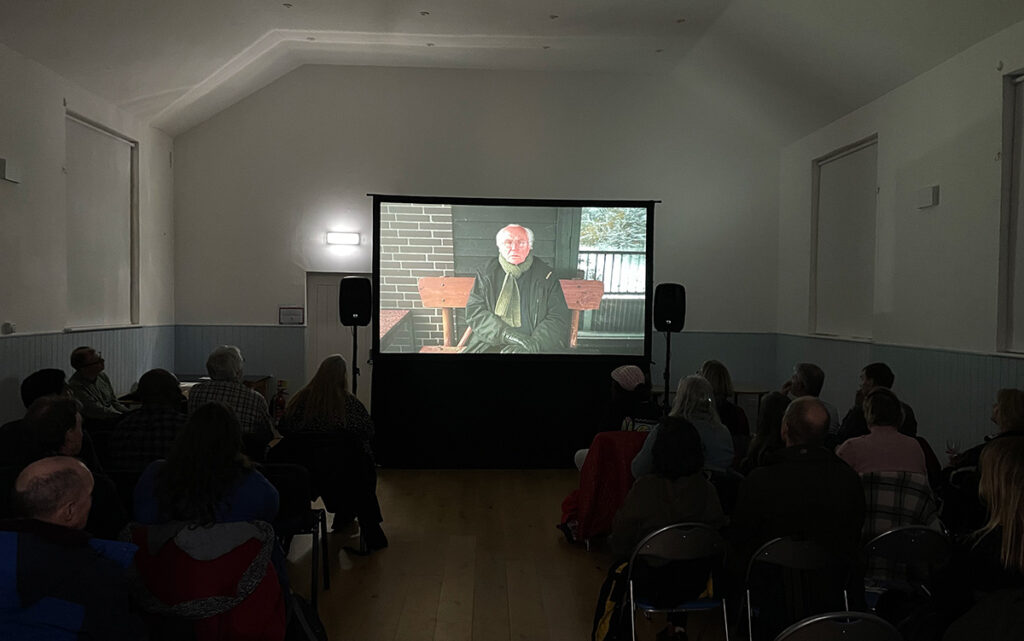
But after each screening comes a discussion, and depending on how it is framed, organised, and who attends, it can create interesting results. This is not up to the film — it’s up to the organisers, panel, and audience. The film merely provides the excuse to tackle large questions in a way an academic talk, or a policy paper, cannot. That is where the shining moments happened during this tour — once we started having those conversations, we saw how open and curious people are about changing the system. And how deeply they feel the need. In Dunbar, there was a particularly inspired energy. That’s because a lot of ‘local wellbeing economy’ is already happening there. The room knew a lot more about the wellbeing economy than I do: People in Dunbar are practicing it, I am only talking about it.
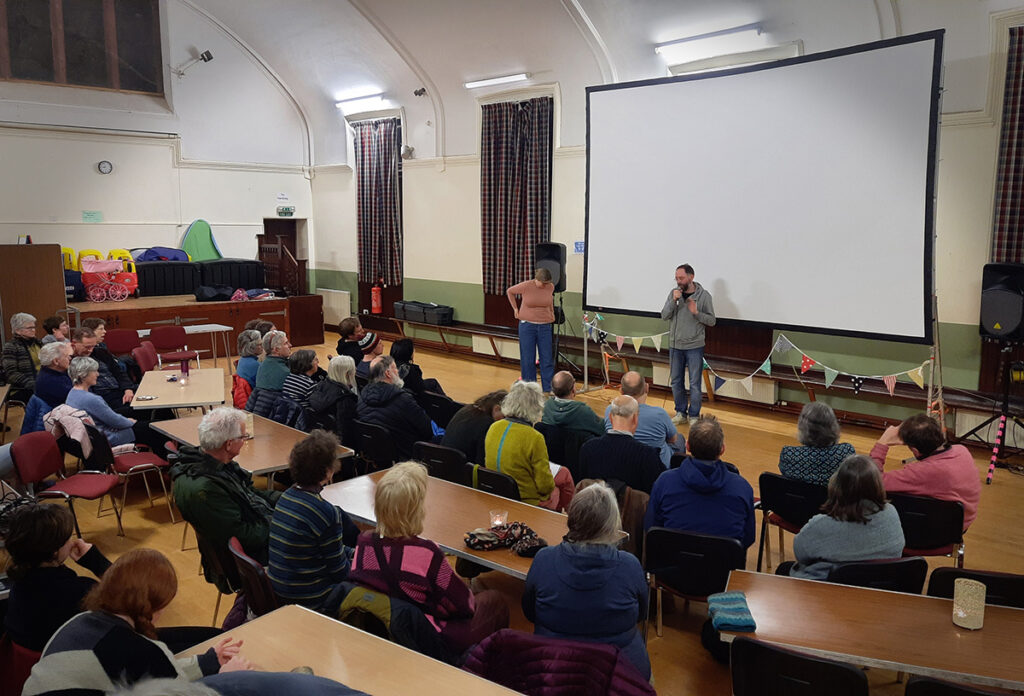
My dream would be that our film continues to get screened in the world’s best little country — in a new place every week, until the next Scottish election in 2026. Not because it will change the election’s outcome. But because it may lead to countless conversations. And those just might. If the wellbeing economy has one chance, it’s people who talk about it — bravely enough and loud enough so politicians take note, remember the pioneering path that Scotland was once on, and return to it.
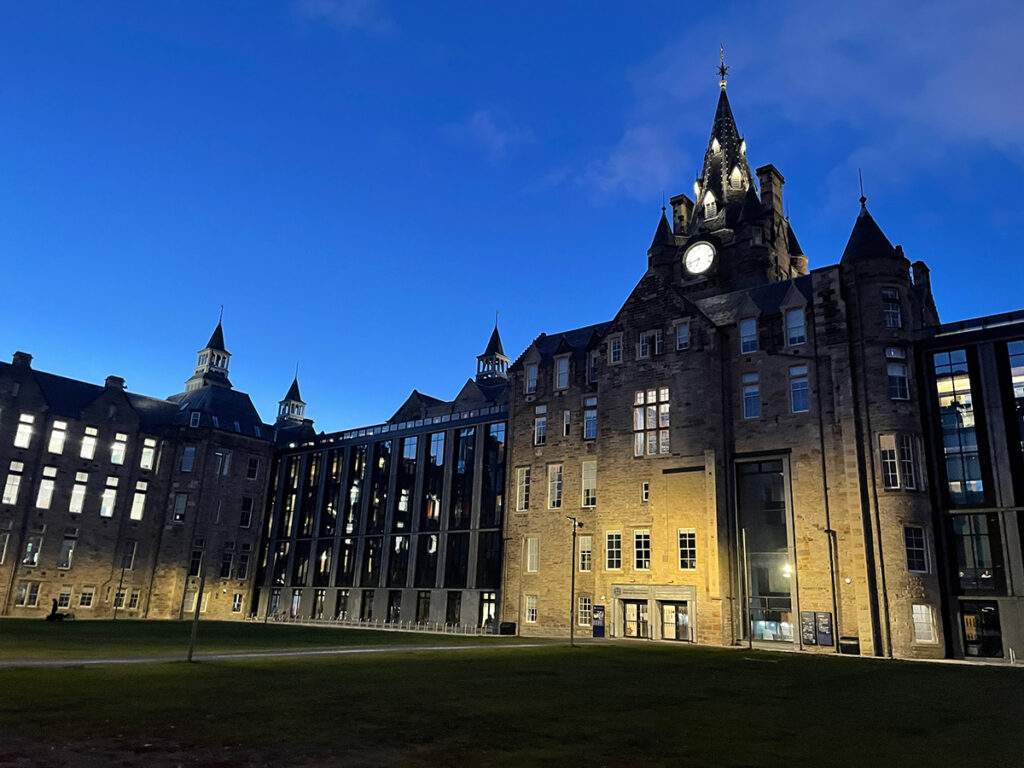
Thank you
To my colleague Juan Pistone, and to Lukas Bunse, Charis Chittick and Aileen McLeod at WEAll Scotland, for coordinating, organising, enabling, and promoting. To Michael Weatherhead and Erik Weber and his family, for being gracious hosts. To David Holmes, Darren Dickson, Ruby Keddie and Gary Gillespie, for the session at St. Andrew’s House. To Mark Langdon, Elke Heins, Lucy Ewing, Lesley Anne Rose, Philip Revell, Nicola Smock, and Deirdre Shaw, for being the champions that made these screenings happen. To Rachel Grant, whose screening did not work out in the end — but maybe one day will. To Philip and his wife Liz, for teaching me about John Muir. To Martin Aitken and the ‘Flix in the Sticks’ team, for turning community rooms into cinemas. To Katherine Trebeck and Gary Gillespie, for expanding their roles in the film to the screening rooms where we showed the film. And to everyone else who helped make this happen, and whom I forgot to mention.
